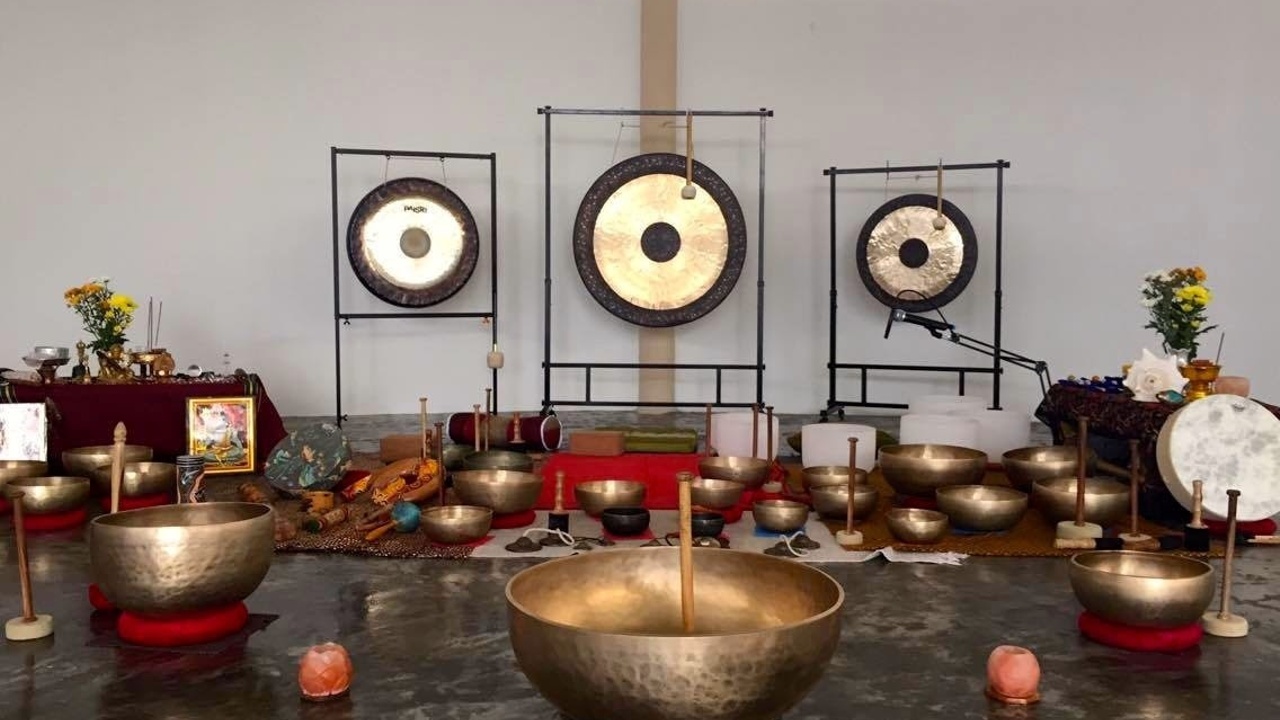Lower Blood Pressure with a 6,000 Year-Old Waterless “Bath”

Did you know that you can lower your blood pressure, reduce anxiety, and feel more centered just by taking a bath?
But not just any bath. In fact, you won’t need soap, water, or even a tub...
That’s because I’m talking about “sound baths”—a 6,000 year-old ancient Asian practice that’s a deeply immersive, whole-body listening experience.
I enjoyed my first sound bath several years ago and can personally attest to all the remarkable health benefits.
An introduction to sound baths
If you’re unfamiliar with sound baths, here’s what you can typically expect…
You will start by either sitting comfortably or laying down on a blanket and closing your eyes (if you prefer).
A facilitator will typically stand at the front of the room and guide you through some deep breathing exercises.
Then, they’ll softly start to play repetitive notes on a variety of soothing instruments—gongs, crystal sound bowls, chimes, harps, bells, cymbals, and didgeridoos—each of which possess their own powerful vibrational frequency.
Some facilitators also walk throughout the room, playing certain instruments near or above you to encourage deeper benefits and a more powerful experience.
The sounds of these instruments will reverberate throughout the room and your body, inducing a deep state of relaxation and bringing your focus away from your thoughts. The vibrations can feel like they’re enrapturing you, hence why it’s called a “bath.”
 s
s
I was shocked by my results…
For me personally, the feeling during my first sound bath was unlike anything I’d ever experienced…
I could feel the vibration from these sacred instruments in my bones! It was as if my entire body was immersed in sound—kind of like I was being cradled in a hammock of vibration. It was intense, yet comforting.
At the end of the session, I laid there peacefully. My stress and thoughts had evaporated. I felt well-rested and rejuvenated, as if I’d just had the best sleep of my life.
Throughout the remainder of the day, I felt more focused and at ease. And I was in a great mood. In my mind, the results were undeniable.
But my experience isn’t just anecdotal…
As it turns out, a lot of studies have been conducted on sound baths and their effects on health.
Increase happiness and enhance health markers
In one 2014 study published in the American Journal for Health Promotion, researchers studied the health effects of sound baths on 51 study participants over a two-day period.
Each day the subjects participated in either:
- 12 minutes of listening to a Himalayan singing bowl (often used in sound baths), followed by 20 minutes of directed relaxation, OR
- 12 minutes of silence, followed by 20 minutes of directed relaxation
The researchers found that, compared to the group that sat in silence, the subjects in the Himalayan singing bowl group experienced larger drops in blood pressure and heart rate. They also had more improvements in mood.
In another study, published in the Journal of Evidence Based Complementary Alternative Medicine, researchers explored the effects of sound baths on middle-aged participants.
Sixty-two participants took part in a 60-minute sound bath session that used gongs, as well as Tibetan and crystal bowls. They found that after the sound bath, a vast majority of the participants reported significantly less tension, anger, fatigue, and depressed mood. An overwhelming amount also reported a big increase in a feeling of spiritual well-being.
Interestingly, the study subjects who had never participated in a sound bath enjoyed a significantly greater reduction in tension compared to those who had previous experience. (A great reason to give this ancient practice a try!)
Ways you can “wash” your stress away
Though sound baths aren’t quite “mainstream” yet, I predict this practice will continue to gain momentum over the next few years—especially as more research is published.
And if you ever have the opportunity to experience a live sound bath experience, I highly recommend it!
To find one near you, I recommend starting your search online—simply use the key phrase “sound bath near me.” You might also want to check out a few local yoga studios—a lot of locations now host them.
SOURCES:
Goldsby, T., Goldsby, M., McWalters, M., and Mills, P. (2017) Effects of Singing Bowl Sound Meditation on Mood, Tension, and Well-being: An Observational Study. Journal of Evidence Based Complementary Alternative Medicine. 22(3): pp. 401-6. Retrieved from: ncbi.nlm.nih.gov/pmc/articles/
Kalaichandran, A. (2019). How sound baths ended up everywhere. New York Times. Retrieved from: nytimes.com/2019/08/03/style/
Landry, JM. (2013). Physiological and psychological effects of a Himalayan singing bowl in meditation practice: a quantitative analysis. American Journal of Health Promotion. 25(5): pp. 306-9. Retrieved from: ncbi.nlm.nih.gov/pubmed/


